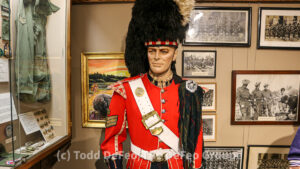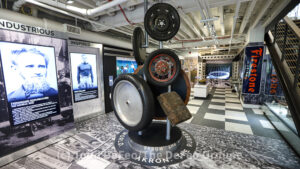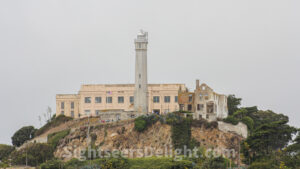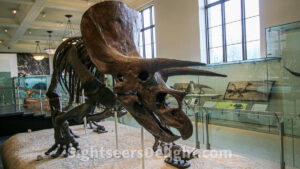Lumpkin County built its now historic jail in 1884. It features jail cells on the building’s second floor. The sheriff or a deputy lived on the ground floor. The National Register of Historic Places added the building to its list in 1985. Inside, visitors can glimpse the jail’s iron cell doors and scribbles inmates on the cell walls as they passed the time.
30533
The 1940 Air Terminal Museum is located at at William P. Hobby Airport and housed in the original art deco building which served as the first purpose-built terminal for passenger flight in Houston. The museum features collections focusing on civil aviation history in Space City. It is operated by the Houston Aeronautical Heritage Society (HAHS), a non-profit organization.
77061
The storied history of the 48th Highlanders of Canada, a part-time militia, is on full display in this delightful museum in the basement of St. Andrew’s Church. The museum displays a range of photographs, artifacts and uniforms to bring the unit to life. The museum was founded in 1959 and has been located in St. Andrew’s Church since 1997. Former unit members staff the museum and are more than willing to share personal anecdotes, further enhancing the visitor experience.
For more than a decade, the Abraham Lincoln Presidential Library and Museum has provided visitors with a unique insight into the nation’s 16th president. The museum is home to an incredible collection of artifacts, books and documents that help tell the story of the man who presided over the country during one of the most difficult times. The library is not part of the National Archives and Records Administration’s network of presidential libraries. It is administered by the Illinois Historic Preservation Agency.
62701
Just south of Adairsville, the raiders stopped to tear up the track, prohibiting their pursuers from continuing the chase in a locomotive. At this point, the pursuers abandoned their second locomotive — the William R. Smith — and continued on foot. Minutes later, they commandeered their third engine. They ran the Texas in reverse for the remainder of the chase. Today, a small museum located in the historic 1847 Western & Atlantic depot interprets the city’s role in the Great Locomotive Chase and features a number of exhibits related to the town’s history.
30103
The new Akron History Center opened on Saturday, April 5, 2025, in downtown Akron at 172 South Main Street. Its mission is to create an enduring, free, museum-quality exhibit about Akron’s history. Operated by the Akron-Summit County Public Library in collaboration with the Summit County Historical Society and the non-profit Akron History Center, incorporated in 2023, the Akron History Center features more than 60 exhibits showcasing more than 100 historical artifacts, accompanied by stories told on over 30 video screens. Akron History Center, governed by a 15-member board of volunteers, raised $2.2 million. The initial investment was a $500,000 grant from Akron, followed by support from Akron’s foundations, businesses and local residents. The Akron History Center became possible when the Bowery Development Group acquired six historic buildings on Main Street in 2016.
Barrie Projects of Cleveland Heights conceived the design of the center. Dennis and Kathy Barrie also created the International Spy Museum in Washington, D.C., the National Museum of Organized Crime & Law Enforcement in Las Vegas, the U.S. Olympic and Paralympic Museum in Colorado Springs, the Maltz Museum of Jewish Heritage, and the National Museum of Psychology in Akron. Communication Exhibits of Canal Fulton designed and fabricated the exhibits. The company has created exhibits for industry and museums for more than 40 years.
44308
The Rock is more myth than reality. Still, the former federal penitentiary attracts more than 1 million visitors annually as a museum. Some of the country’s most notorious criminals were incarcerated on The Rock at one time or another. Several tried to escape, but none were successful. Or, were they? Even though the prison closed in the 1960s, its stories about remain legendary to this day.
94122
The Alexander & Baldwin Sugar Museum is located in former mill manager’s house located next to what was once Hawaii’s largest working sugar factory. The museum, located in the historic plantation town of Puunene, Maui, showcases the history of Hawaiian sugarcane plantations and how the industry shaped the community.
96784
The Amelia Island Museum of History provides visitors with an overview of the island’s history, starting with its Native American occupants and continuing through modern times. The museum is located in the former Nassau County jail.
32034
Founded in 1869, the American Museum of Natural History in New York City is one of the world’s preeminent cultural institutions and features 45 permanent exhibition halls. The museum is home to the Theodore Roosevelt Memorial, New York State’s official memorial to its 33rd governor and the nation’s 26th president, and a tribute to Roosevelt’s enduring legacy of conservation. The museum’s five active research divisions and three cross-disciplinary centers support approximately 200 scientists, whose work draws on a world-class permanent collection of more than 34 million specimens and artifacts, as well as specialized collections for frozen tissue and genomic and astrophysical data, and one of the largest natural history libraries in the world.
10024







